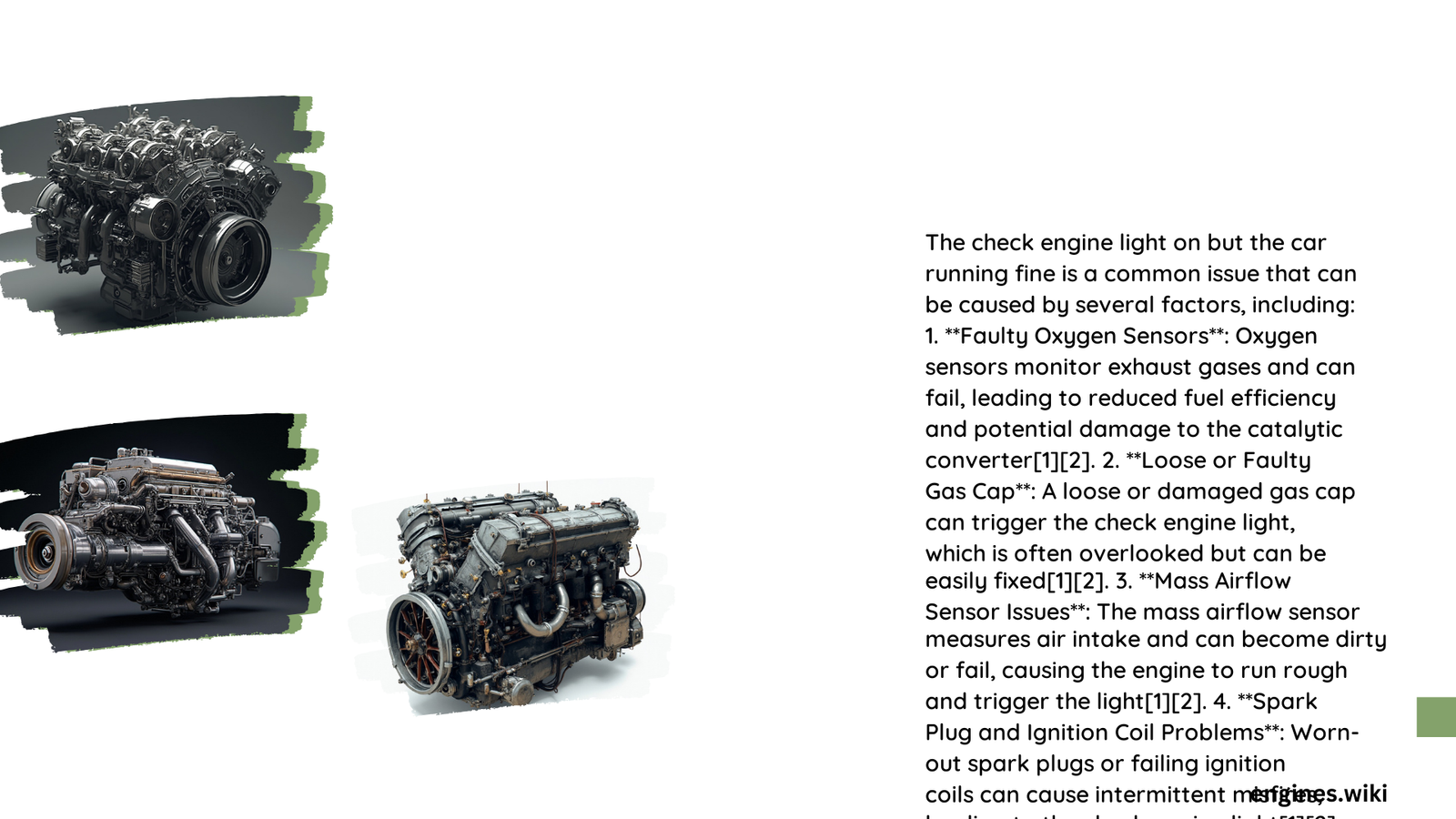The check engine light is a crucial indicator in your vehicle’s dashboard that can signal various issues. When it illuminates but your car continues to run smoothly, it often indicates a minor problem that doesn’t immediately affect performance. However, ignoring this warning can lead to more serious issues and costly repairs down the line. This article explores the common causes, troubleshooting steps, and potential solutions when your check engine light is on but your car runs fine.
What Are the Most Common Reasons for a Check Engine Light to Come On?
- Loose or Faulty Gas Cap: A common and easily fixable issue.
- Oxygen Sensor Malfunction: Affects fuel efficiency and emissions.
- Catalytic Converter Problems: Can lead to reduced performance and increased emissions.
- Mass Airflow Sensor Issues: May cause stalling or reduced fuel economy.
- Spark Plug or Ignition Coil Failure: Can lead to misfires and reduced performance.
How Can I Diagnose the Problem When My Check Engine Light is On?

- Use an OBD-II Scanner:
- Connect the scanner to your car’s OBD-II port.
- Retrieve the Diagnostic Trouble Codes (DTCs).
-
Interpret the codes to identify the specific issue.
-
Check the Gas Cap:
- Ensure it’s tightened properly.
-
Look for any cracks or damage.
-
Monitor Engine Performance:
- Listen for unusual noises.
-
Pay attention to any changes in acceleration or fuel efficiency.
-
Inspect Visible Components:
- Check for loose wires or hoses.
- Look for signs of wear or damage on accessible parts.
What Should I Do If My Check Engine Light is On But My Car Runs Fine?
- Don’t Panic: If your car is running normally, it’s likely not an emergency.
- Get the Code Read: Visit an auto parts store for a free code reading or use your own OBD-II scanner.
- Address Simple Issues: If it’s a loose gas cap, tighten it and see if the light goes off after a few drive cycles.
- Monitor the Situation: Keep an eye on your car’s performance and any changes in the light (e.g., flashing instead of steady).
- Schedule a Professional Inspection: If you can’t identify or fix the issue yourself, have a mechanic take a look.
Can I Continue Driving with the Check Engine Light On?
While you can often continue driving for a short period with the check engine light on, it’s not recommended to ignore it long-term. Here’s why:
| Reason | Explanation |
|---|---|
| Potential for Worsening Issues | Minor problems can escalate if left unaddressed |
| Reduced Fuel Efficiency | Some issues can significantly impact your gas mileage |
| Risk of Sudden Breakdown | Certain problems may lead to unexpected vehicle failure |
| Environmental Impact | Emissions-related issues can harm the environment |
| Potential for Costly Repairs | Ignoring problems often leads to more expensive fixes later |
How Do I Reset the Check Engine Light?
- Use an OBD-II Scanner:
- Connect the scanner and clear the codes.
-
This is the most reliable method.
-
Disconnect the Battery:
- Remove the negative terminal for about 15 minutes.
-
Note: This may reset other electronic systems in your car.
-
Drive and Wait:
- Sometimes, the light will reset itself after several drive cycles if the issue is resolved.
What Are the Potential Costs Associated with Check Engine Light Diagnosis and Repair?
The costs can vary widely depending on the underlying issue:
- DIY Diagnosis: $20-$100 for an OBD-II scanner
- Professional Diagnosis: $50-$150
- Common Repairs:
- Gas Cap Replacement: $5-$50
- Oxygen Sensor Replacement: $200-$500
- Catalytic Converter Replacement: $500-$2,500
- Mass Airflow Sensor Replacement: $200-$400
- Spark Plug Replacement: $100-$300
How Can I Prevent Future Check Engine Light Issues?
- Regular Maintenance: Follow your vehicle’s recommended service schedule.
- Prompt Attention to Warning Signs: Address any unusual noises, smells, or performance issues quickly.
- Quality Fuel and Parts: Use recommended fuel grades and high-quality replacement parts.
- Gentle Driving Habits: Avoid aggressive acceleration and braking.
- Keep Your Car Clean: Regular washing and vacuuming can prevent debris-related issues.
Remember, while a check engine light on with no apparent performance issues might seem harmless, it’s always best to diagnose and address the problem promptly. This proactive approach can save you time, money, and potential headaches down the road.
